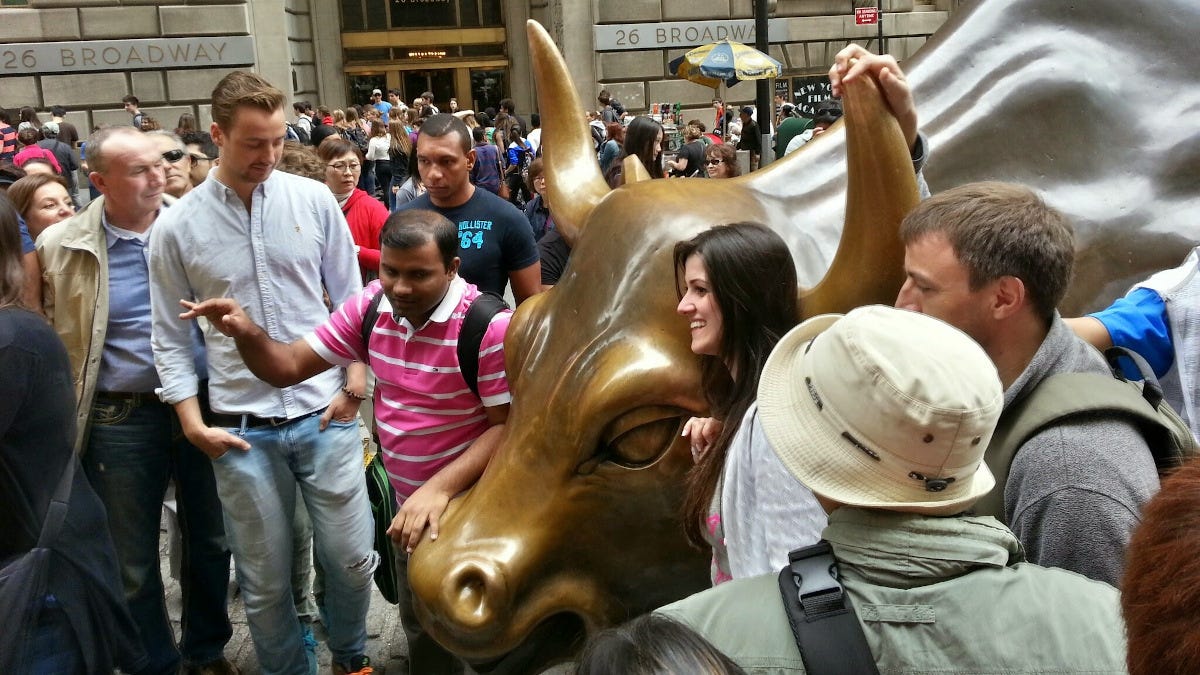When stock market prices begin to "wobble", "gyrate", or "whipsaw", there is nothing so sure as the compulsion of the financial press (and the news media at large) to make endless attempts to tell the story through countless anecdotes and market commentaries. They are relentless in their quest to patch together a narrative explanation -- one that often drifts into outright anthropomorphization of the markets.
■ It's a widely-used convention, since turning the abstract stock market into "Mr. Market" is a natural way to tell a story. But it's also an insidious way to mislead audiences. Drama may be good for page views, but it's fairly awful for anyone with the good sense to think of investing as a long-term process.
■ In 2012, Warren Buffett told the audience at the annual Berkshire Hathaway shareholders' meeting that "If we had our way, we'd sell stock one time per year at our calculation of intrinsic value." Tracking the daily gyrations of the market is a lot like following the box scores of every Major League Baseball team: It's an effective way to occupy one's time and the space inside one's head, but it's too small a slice of the whole picture to really offer any use. (Assuming, of course, that there will be a 2022 baseball season at all.)
■ Buffett's advice is valuable precisely because it is so difficult for people to follow. His admonition for decades has been that in the short run the stock market is like a voting machine, but in the long run it is like a weighing machine.
■ Changes from hour to hour or day to day can make headlines and over time can quite obviously accumulate to the point where they can have a meaningful impact. But stock prices are meaningless in the absence of stock values. And what a company is worth -- which, divided by the number of shares available, makes up the intrinsic value of the stock -- almost never rises and falls by very much from hour to hour, from day to day, or even from month to month.
■ It's an unsatisfying proposition to tell many (if not most) people that what happens in a day on the stock market is generally as inconsequential as the daily weather forecast on the other side of the globe. Yet that unsatisfactory truth remains correct: If a person enters thoughtfully into an investment and is confident that he or she is getting more value than the price paid, then what happens to the price later on is mostly trivial -- unless and until it converges with the intrinsic value and goes on to exceed it, at which point a sale may be in order.
■ Headlines, market bulletins, and quasi-informative commentary all generate interest (and eyeballs) for the people producing them, but a lot of time and agony could be spared if we really did only open the stock market for trading once a year. It will never happen, of course, but were we to adopt that pace instead of taking second-by-second quotations (and tolerating the scourge of high-frequency trading), we could perhaps divert more of our attention not to the moment-by-moment, but rather to workings of the weighing machine.
[Originally published in the Evening Post & Mail on January 25, 2022]




